Archives
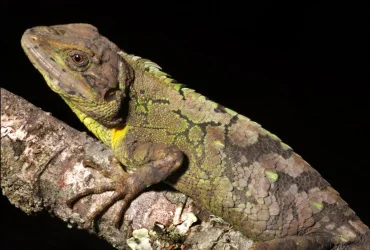 v13i1.322
v13i1.322ISSN: 1800-427X (printed)
eISSN: 1800-427X (online)
DOI:10.47605/tapro.v13i1.322
Submitted date: 7 July 2023
Accepted date: 30 April 2024
Published date: 30 May 2024
Pp. 27.
The first record of a female Azur sprite (Pseudagrion decorum) from Sri Lanka
J. Gunawardane, D.V.L.V. Samarasinghe* & H.D.B.H. Hettiarachchi
*Corresponding author. E-mail: lasanvibudha@gmail.com
The Azur sprite or elegant sprite (Pseudagrion decorum Rambur, 1842) is a medium-sized damselfly belonging to the Family Coenagrionidae. This species exhibits sexual dimorphism: males are pale blue in colour with three fine black lines on the mid-dorsum, whereas females are more greenish to yellowish in colour on the thorax. It is a common, widespread species in India, Pakistan, Bangladesh, and Nepal. In Sri Lanka, P.decorum is very rare; with one male recorded from a tank near Mannar in the Northern Province.
Section Editor: Wade Worthern
eISSN: 1800-427X (online)
DOI:10.47605/tapro.v13i1.322
Submitted date: 7 July 2023
Accepted date: 30 April 2024
Published date: 30 May 2024
Pp. 27.
The first record of a female Azur sprite (Pseudagrion decorum) from Sri Lanka
J. Gunawardane, D.V.L.V. Samarasinghe* & H.D.B.H. Hettiarachchi
*Corresponding author. E-mail: lasanvibudha@gmail.com
The Azur sprite or elegant sprite (Pseudagrion decorum Rambur, 1842) is a medium-sized damselfly belonging to the Family Coenagrionidae. This species exhibits sexual dimorphism: males are pale blue in colour with three fine black lines on the mid-dorsum, whereas females are more greenish to yellowish in colour on the thorax. It is a common, widespread species in India, Pakistan, Bangladesh, and Nepal. In Sri Lanka, P.decorum is very rare; with one male recorded from a tank near Mannar in the Northern Province.
Section Editor: Wade Worthern
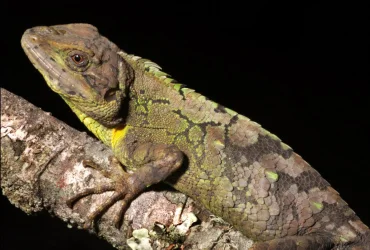 v13i1.321
v13i1.321ISSN: 1800-427X (printed)
eISSN: 1800-427X (online)
DOI:10.47605/tapro.v13i1.321
Submitted date: 28 August 2023
Accepted date: 30 April 2024
Published date: 30 May 2024
Pp. 26.
Predation of an orb-web spider (Argiope sp) on the baron (Euthalia sp)
M.S. Ahammed*
*Corresponding author. E-mail: md.sabbirahammedshawon@gmail.com
The giant cross spider (Argiope anasuja Thorell, 1887) is a carnivore that uses its orb-webs to trap insects and other invertebrates and is widely distributed throughout Seychelles, the Maldives, Iran, Pakistan, India, Bangladesh, Sri Lanka, and Australia (Cocos Is.). Scant information is available on the diet of these spiders in Bangladesh. On 1 April 2021 at 12:17 h, we observed a giant cross spider predate on a butterfly at Kendua (23°04′38.4″N, 91°19′12.3″E), Cumilla, Bangladesh. It was a sunny day while we were passing by a home garden and encountered this phenomenon. The spider was moving on its web, approximately 3 m above the ground. At the same time, a common baron (Euthalia aconthea) was flying around it. After a while, the baron flew into the web and got trapped. As soon as the baron got trapped, the spider wrapped it in silk.
Section Editor: Matjaž Gregorič
eISSN: 1800-427X (online)
DOI:10.47605/tapro.v13i1.321
Submitted date: 28 August 2023
Accepted date: 30 April 2024
Published date: 30 May 2024
Pp. 26.
Predation of an orb-web spider (Argiope sp) on the baron (Euthalia sp)
M.S. Ahammed*
*Corresponding author. E-mail: md.sabbirahammedshawon@gmail.com
The giant cross spider (Argiope anasuja Thorell, 1887) is a carnivore that uses its orb-webs to trap insects and other invertebrates and is widely distributed throughout Seychelles, the Maldives, Iran, Pakistan, India, Bangladesh, Sri Lanka, and Australia (Cocos Is.). Scant information is available on the diet of these spiders in Bangladesh. On 1 April 2021 at 12:17 h, we observed a giant cross spider predate on a butterfly at Kendua (23°04′38.4″N, 91°19′12.3″E), Cumilla, Bangladesh. It was a sunny day while we were passing by a home garden and encountered this phenomenon. The spider was moving on its web, approximately 3 m above the ground. At the same time, a common baron (Euthalia aconthea) was flying around it. After a while, the baron flew into the web and got trapped. As soon as the baron got trapped, the spider wrapped it in silk.
Section Editor: Matjaž Gregorič
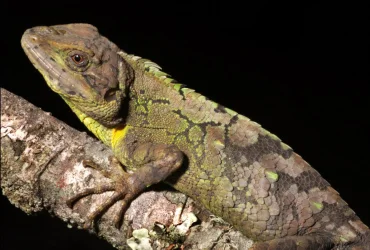 v13i1.320
v13i1.320ISSN: 1800-427X (printed)
eISSN: 1800-427X (online)
DOI:10.47605/tapro.v13i1.320
Submitted date: 6 June 2023
Accepted date: 30 April 2024
Published date: 30 May 2024
Pp. 25.
An opportunistic mating attempt of a flower crab spider (Thomisus sp.), India
A. Mhadgut*
*Corresponding author. E-mail: naturetalks2320@gmail.com
Flower crab spiders of the genus Thomisus, Walckenaer, 1805 have a crab-like habitus with its first two pairs of legs that are long and robust. The Thomisus spiders do not build webs, but instead capture their prey using ambush, or sometimes by active pursuit hiding in flowers, leaves, and leaf litter. Some species flatten their bodies to hunt inside crevices or tree trunks under loose bark. Most of the Thomisus species are sexually dimorphic, males are much smaller than females. On 2 November 2020, I observed a female crab spider capturing a chestnut bob butterfly (Lambrix salsala) while it was trying to feed on the nectar of Jamaican spike flowers, Stachytarpheta jamaicensis (Verbenaceae) in the Butterfly Garden located at Sanjay Gandhi National Park (SGNP), Maharashtra, India.
Section Editor: Ayan Mondal
eISSN: 1800-427X (online)
DOI:10.47605/tapro.v13i1.320
Submitted date: 6 June 2023
Accepted date: 30 April 2024
Published date: 30 May 2024
Pp. 25.
An opportunistic mating attempt of a flower crab spider (Thomisus sp.), India
A. Mhadgut*
*Corresponding author. E-mail: naturetalks2320@gmail.com
Flower crab spiders of the genus Thomisus, Walckenaer, 1805 have a crab-like habitus with its first two pairs of legs that are long and robust. The Thomisus spiders do not build webs, but instead capture their prey using ambush, or sometimes by active pursuit hiding in flowers, leaves, and leaf litter. Some species flatten their bodies to hunt inside crevices or tree trunks under loose bark. Most of the Thomisus species are sexually dimorphic, males are much smaller than females. On 2 November 2020, I observed a female crab spider capturing a chestnut bob butterfly (Lambrix salsala) while it was trying to feed on the nectar of Jamaican spike flowers, Stachytarpheta jamaicensis (Verbenaceae) in the Butterfly Garden located at Sanjay Gandhi National Park (SGNP), Maharashtra, India.
Section Editor: Ayan Mondal
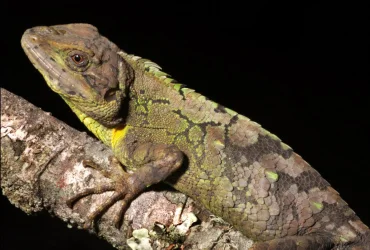 v13i1.319
v13i1.319ISSN: 1800-427X (printed)
eISSN: 1800-427X (online)
DOI:10.47605/tapro.v13i1.319
Submitted date: 10 April 2024
Accepted date: 15 May 2024
Published date: 30 May 2024
Pp. 16–24, pl. 8.
MOLECULAR IDENTIFICATION OF PYTHON SPECIES (SQUAMATA: PYTHONIDAE) FROM MIZORAM, NORTHEAST INDIA, WITH COMMENTS ON WILDLIFE TRAFFICKING
Hmar T. Lalremsanga*, Annie Malsawmkimi, Mathipi Vabeiryureilai, Lal Muansanga, Fanai Malsawmdawngliana, Lal Biakzuala & Olivier S.G. Pauwels
*Corresponding author. E-mail: opauwels@naturalsciences.be
Abstract
Pythonidae, an ancient group of Old World, wide-ranging, constrictor snakes, are known to contain a high degree of cryptic diversity. India harbours three python species, Python molurus, P. bivittatus, and Malayopython reticulatus. The former two species are not uncommon within their respective distribution range in India, but occurrence of the latter has only been confirmed in the Nicobar Islands, and there are two orphaned records from eastern West Bengal. We confirm the occurrence of P. bivittatus and M. reticulatus in Northeast India based on genetics using the mitochondrial cytochrome b gene and morphological characters. Our study reveals multiple lineages among M. reticulatus, corroborating previous studies, and further reveals the absence of a barcode gap between sequences submitted as P. molurus and P. bivittatus among the sampled DNA sequences, and an unexpected lineage of Northeast Indian P. bivittatus based on a sample divergent from the East and Southeast Asian populations that will need further systematic assessment.
Key words : Burmese python, DNA barcoding, phylogenetics, reticulated python, wildlife forensic
Section Editor: Thasun Amarasinghe
eISSN: 1800-427X (online)
DOI:10.47605/tapro.v13i1.319
Submitted date: 10 April 2024
Accepted date: 15 May 2024
Published date: 30 May 2024
Pp. 16–24, pl. 8.
MOLECULAR IDENTIFICATION OF PYTHON SPECIES (SQUAMATA: PYTHONIDAE) FROM MIZORAM, NORTHEAST INDIA, WITH COMMENTS ON WILDLIFE TRAFFICKING
Hmar T. Lalremsanga*, Annie Malsawmkimi, Mathipi Vabeiryureilai, Lal Muansanga, Fanai Malsawmdawngliana, Lal Biakzuala & Olivier S.G. Pauwels
*Corresponding author. E-mail: opauwels@naturalsciences.be
Abstract
Pythonidae, an ancient group of Old World, wide-ranging, constrictor snakes, are known to contain a high degree of cryptic diversity. India harbours three python species, Python molurus, P. bivittatus, and Malayopython reticulatus. The former two species are not uncommon within their respective distribution range in India, but occurrence of the latter has only been confirmed in the Nicobar Islands, and there are two orphaned records from eastern West Bengal. We confirm the occurrence of P. bivittatus and M. reticulatus in Northeast India based on genetics using the mitochondrial cytochrome b gene and morphological characters. Our study reveals multiple lineages among M. reticulatus, corroborating previous studies, and further reveals the absence of a barcode gap between sequences submitted as P. molurus and P. bivittatus among the sampled DNA sequences, and an unexpected lineage of Northeast Indian P. bivittatus based on a sample divergent from the East and Southeast Asian populations that will need further systematic assessment.
Key words : Burmese python, DNA barcoding, phylogenetics, reticulated python, wildlife forensic
Section Editor: Thasun Amarasinghe
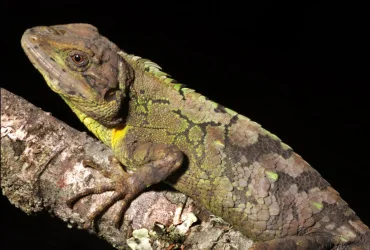 v13i1.318
v13i1.318ISSN: 1800-427X (printed)
eISSN: 1800-427X (online)
DOI:10.47605/tapro.v13i1.318
Submitted date: 10 January 2024
Accepted date: 21 May 2024
Published date: 30 May 2024
Pp. 9–15, pls. 6–7.
A FURTHER TAXONOMIC REASSESSMENT OF Cyrtodactylus madarensis SHARMA, 1980 (SQUAMATA: GEKKONIDAE) NOW IN THE GENUS Eublephairs Gray, 1827 (SQUAMATA: EUBLEPHARIADE)
Zeeshan A. Mirza*
*Corresponding author. E-mail: snakeszeeshan@gmail.com
Abstract
A recent phylogenetic study identified the population of Eublepharis Gray, 1827, from Rajasthan (India) as a distinct taxon from Eublepharis macularius (Blyth, 1854). A taxonomic reassessment of the population based on literature, existing museum material and molecular data allowed me to assign the name Eublepharis madarensis (Sharma, 1980) to this population. A redescription and rediagnosis of the species are presented based on museum material and images of uncollected individuals. A discussion on the assignment of the nomen ‘madarensis’ is presented. The species appears to be distributed along the Aravalli hills, and most records of the species lie outside of protected areas.
Key words : Eublepharidae, India, Sauria, synonymy, taxonomy
Section Editor: Thasun Amarasinghe
eISSN: 1800-427X (online)
DOI:10.47605/tapro.v13i1.318
Submitted date: 10 January 2024
Accepted date: 21 May 2024
Published date: 30 May 2024
Pp. 9–15, pls. 6–7.
A FURTHER TAXONOMIC REASSESSMENT OF Cyrtodactylus madarensis SHARMA, 1980 (SQUAMATA: GEKKONIDAE) NOW IN THE GENUS Eublephairs Gray, 1827 (SQUAMATA: EUBLEPHARIADE)
Zeeshan A. Mirza*
*Corresponding author. E-mail: snakeszeeshan@gmail.com
Abstract
A recent phylogenetic study identified the population of Eublepharis Gray, 1827, from Rajasthan (India) as a distinct taxon from Eublepharis macularius (Blyth, 1854). A taxonomic reassessment of the population based on literature, existing museum material and molecular data allowed me to assign the name Eublepharis madarensis (Sharma, 1980) to this population. A redescription and rediagnosis of the species are presented based on museum material and images of uncollected individuals. A discussion on the assignment of the nomen ‘madarensis’ is presented. The species appears to be distributed along the Aravalli hills, and most records of the species lie outside of protected areas.
Key words : Eublepharidae, India, Sauria, synonymy, taxonomy
Section Editor: Thasun Amarasinghe
Hubungi Kami
The ultimate aim of the journal is to provide an effective medium for communication of the latest and best scientific information.
Copyright © 2020 Taprobanica. All Rights Reserved
Jasa Pembuatan Website by IKT




